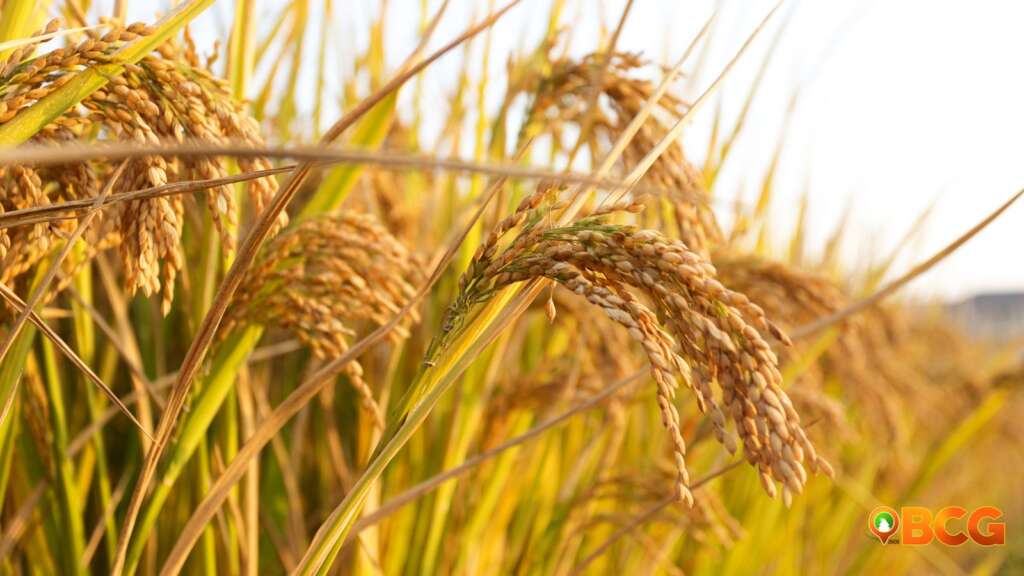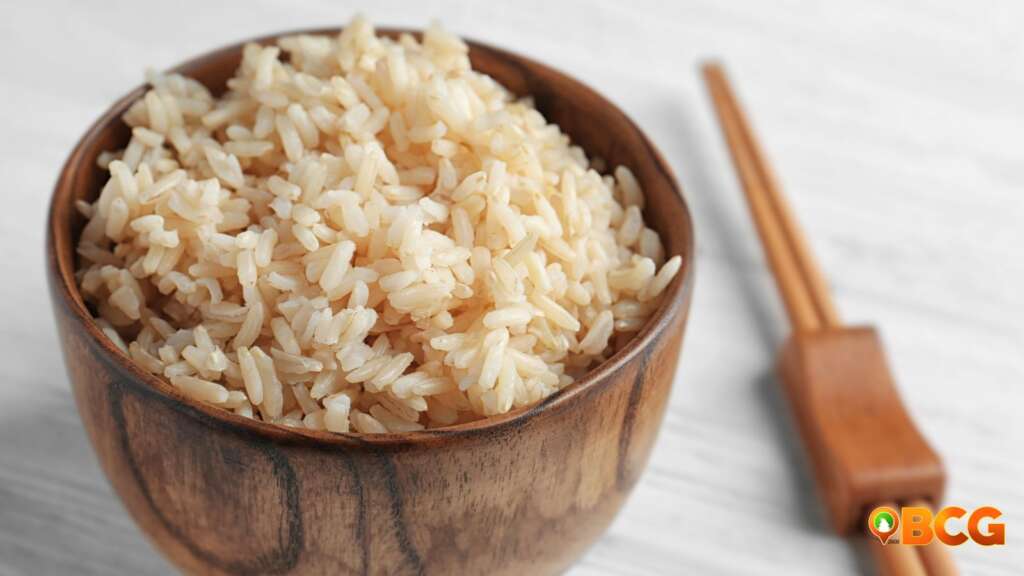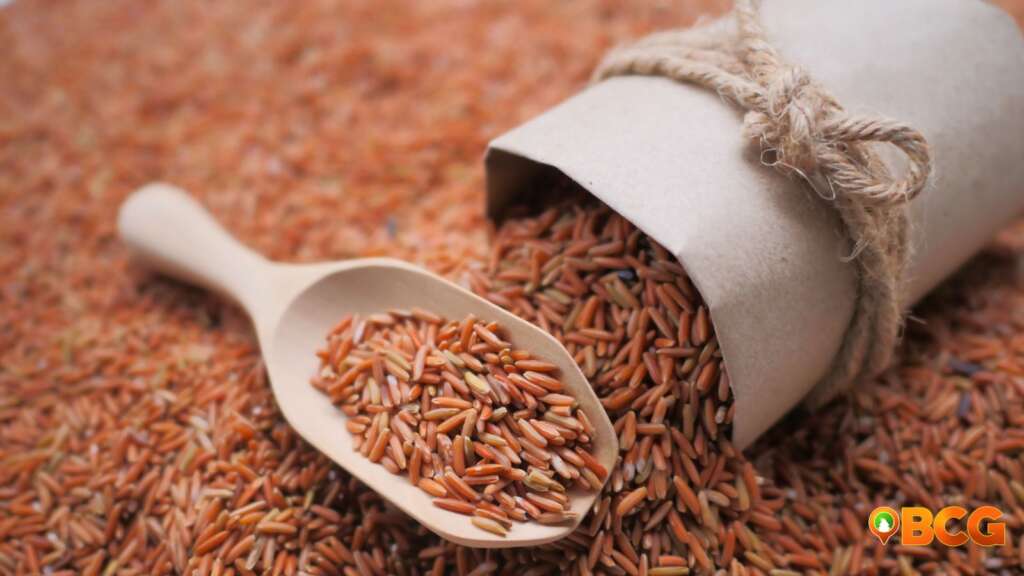Brown, red, black, riceberry – what are these white rice alternatives, and are they actually healthier?
Yasmine Probst, University of Wollongong; Karen Zoszak, University of Wollongong, and Olivia Wills, University of Wollongong
Throughout history, rice has remained an important food staple. It supports the nutritional needs of more than half of the global population.
While you might be familiar with a handful of types, there are more than 40,000 different varieties of cultivated rice – a testament to the diversity and adaptability of this staple crop.
Rice, much like other grains, is the edible starchy kernel of a grass plant. In fact, the vast majority of rice varieties (although not all) belong to just one species – Oryza sativa.
If you have ever found yourself at the supermarket, overwhelmed by the number of rice options available, you are not alone. From aromatic Thai “jasmine” rice used in curries, to the “basmati” rice of India and the sticky “arborio” for making creamy Italian risotto, each variety, or cultivar, is distinguished by its grain length, shape and colour.
Each cultivar also has its own flavour, texture and unique nutrient properties. To make things more complicated, some varieties are higher in anthyocyanins – antioxidants that protect the body’s cells from damage. These rice varieties are known by their colour – for example, red or black rice.

Oryza sativa is a major food crop – a grass plant cultivated into thousands of varieties.
What is brown rice?
Compared to white rice, brown rice is a whole grain with only the inedible outer hull removed. It is largely grown in India, Pakistan and Thailand.
To make white rice, the bran (outer shell) of the grains is removed. In brown rice, the bran and germ (core of the grain) are still intact, giving this type of rice its tan colour and high fibre content. Brown rice naturally contains more nutrients than white rice, including double the amount of dietary fibre and substantially higher magnesium, iron, zinc and B group vitamins, including folic acid.
Brown rice also contains polyphenols and flavonoids – types of antioxidants that protect the body from stress.
It is often sold as a longer grain option and has a similar nutty flavour to black and red rice cultivars, though some chefs suggest the texture is slightly chewier.

Brown rice owes its colour and texture to the fact it contains bran – the fibrous outer layer of the grain.
Fancy black rice
While not as common as other varieties, black rice – also called purple rice due to its colouring – is high in anthocyanins. In fact, black rice contains the same antioxidant type that gives “superfoods” like blueberries and blackberries their deep purple colour.
The Oryza sativa variant of black rice is grown primarily in Asia and exported globally, while the Oryza glaberrima variant is native to and grown only in Africa. Among black rices there are also different shades, from japonica black rice, Chinese black rice, Thai black rice through to Indonesian black rice.
With its antioxidant properties, some would argue black rice is one of the healthiest choices due to its protective effects for heart health and metabolic diseases.
Black rice can be a short, medium or long grain and has only the outermost layer (inedible hull) removed for consumption. The bran and germ remain intact, similar to brown rice, making it a high fibre food. Black rice has been described by some foodies to have a mild nutty and even slightly sweet flavour.

Black rice is also known as purple rice due to its colour when cooked.
Iron-rich red rice
Similar to black rice, red rice, or Oryza rufipogon, is a medium or long grain variety coloured by its anthocyanin content. Interestingly, it is considered an edible weed growing alongside other rice varieties and primarily grown in Asia as well as Northern Australia.
The difference in colour compared to black rice types is due to the amount and type of anthyocyanins (specifically catechins and epicatechins) in red rice.
Red rice also contains more iron and zinc compared to white, black or brown varieties. The anthocyanins found in red rice are used as a pigment for colouring other foods such as liquor, bread and ice cream.

Red rice has different types of antioxidants in it, giving the grains their russet red colour.
Is riceberry a type of rice, too?
Despite the slightly confusing name, riceberry rice was originally developed in Thailand as a cross between a local jasmine rice and local purple rice variety, creating a lighter, purple-coloured grain.
Increasingly available in Asian grocers across Australia, this type of rice has a more favourable nutrient profile than brown rice and has a shorter cooking time similar to that of white jasmine rice.
Rice is not just another carb
Rice has many nutritional benefits besides providing the body with carbohydrates – its primary fuel source. Rice contains more than 15 essential vitamins and minerals including folic acid, magnesium, iron and zinc and is naturally gluten free, making it an appropriate substitute for people living with coeliac disease.
Brown, red and black rices are also whole grains, recommended as part of a healthy eating pattern.
In addition, different cultivars of rice have a low glycaemic index or GI – a measure of the speed at which carbohydrates raise blood sugar levels.
Generally speaking, the more colourful the rice variety, the lower its GI. This is a particularly important consideration for people living with diabetes.
Less frequently consumed rice varieties have nutritional benefits, including their anthocyanin and fibre content. However, they can be harder to find and are often pricier than more common white and brown varieties.
If you enjoy trying foods with unique flavours, try experimenting with black or red rice varieties. Whatever the colour, all types of rice have a place in a balanced diet.
Yasmine Probst, Associate professor, University of Wollongong; Karen Zoszak, Accredited Practising Dietitian, PhD Candidate, University of Wollongong, and Olivia Wills, Accredited Practising Dietitian, PhD candidate, University of Wollongong
This article is republished from The Conversation under a Creative Commons license. Read the original article.















